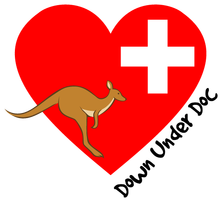A health-related blog for parents and caregivers of young children,
with Australianisms thrown in for good measure!
Back in Australia, the Land Down Under, I worked as a family physician treating snake and spider bites, colds and flus, and everything in between. Well, perhaps the snake bites are a slight exaggeration, but the spider bites are actually true.
I hope you enjoy my chinwags (Aussie for chat) about all things health-related.
P.S. If there are any topics you would like to see covered, just give me a bell (Aussie for call/contact).

